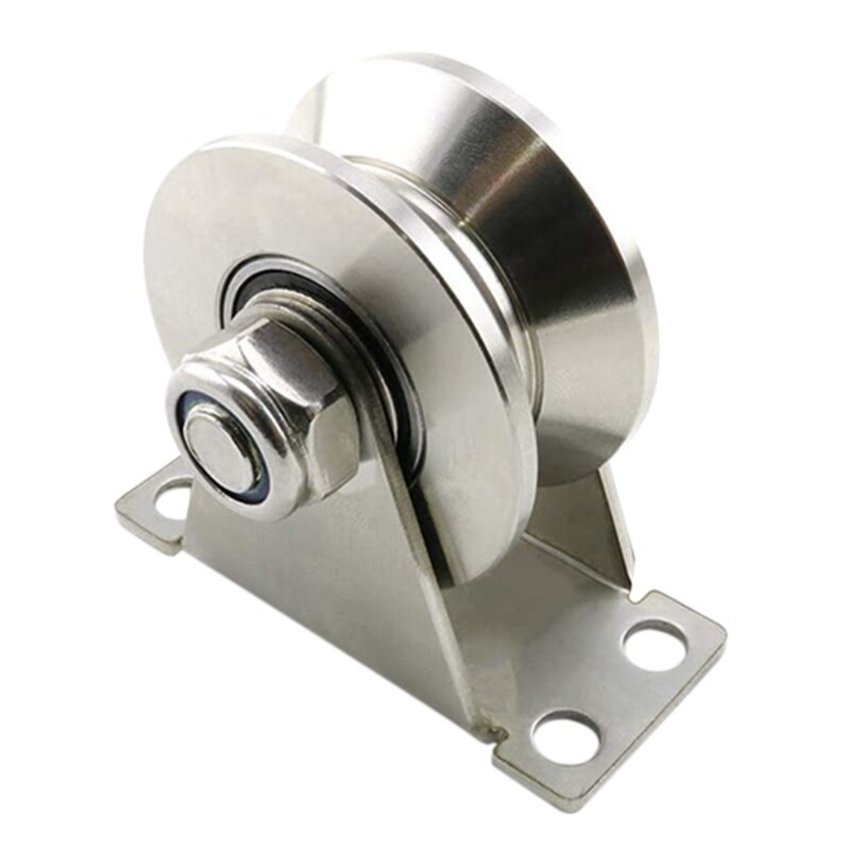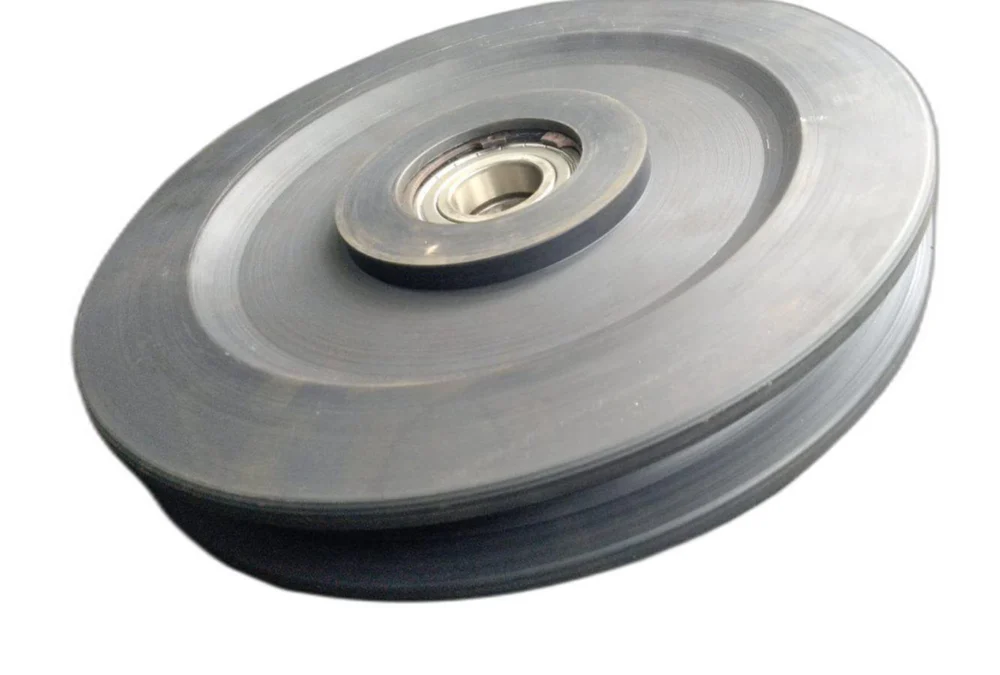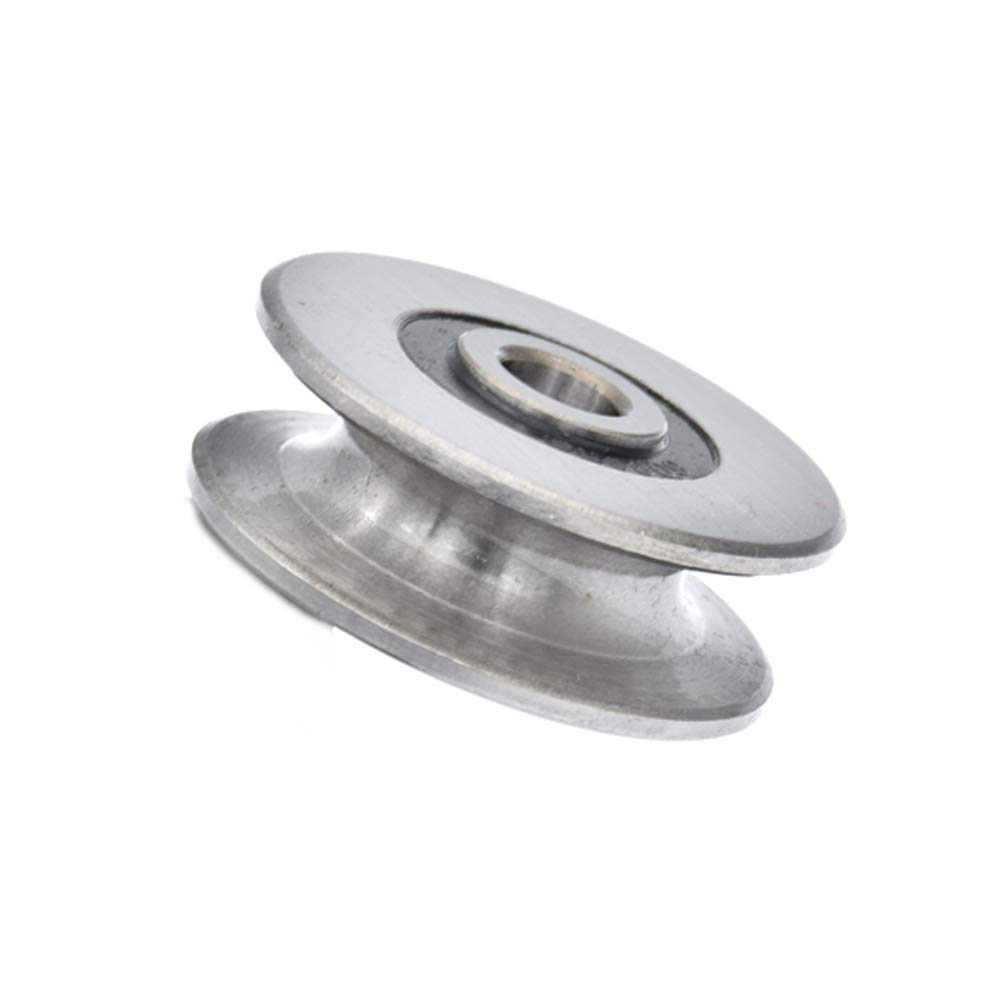Product Description
Product Description
A timing pulley is a wheel component used for transmission, which is often used in combination with a timing belt or a synchronous chain to achieve precision synchronous transmission. The timing pulley usually consists of 2 parts: the wheel flange and the hub. The wheel flange usually has a toothed structure that can be combined with a timing belt or chain to achieve a precise synchronous transmission effect. Synchronous wheels can be divided into 2 categories: grinding gear synchronous wheels and forged tooth synchronous wheels.
Product Parameters
| product | high precision and high quality Cone sleeve timing pulley |
| material | stainless steel , iron , aluminum ,bronze ,carbon steel ,brass etc . |
| size | ISO standard ,customer requirements |
| BORE | Finished bore, Pilot Bore, Special request |
| surface treatment | Carburizing and Quenching,Tempering ,Tooth suface high quenching Hardening,Tempering |
| Processing Method | Molding, Shaving, Hobbing, Drilling, Tapping, Reaming, Manual Chamfering, Grinding etc |
| Heat Treatment | Quenching & Tempering, Carburizing & Quenching, High-frequency Hardening, Carbonitriding…… |
| Package | Wooden Case/Container and pallet, or made-to-order |
| Certificate | ISO9001 ,SGS |
| Machining Process | Gear Hobbing, Gear Milling, Gear Shaping, Gear Broaching, Gear Shaving, Gear Grinding and Gear Lapping |
| Applications | Toy, Automotive, instrument, electrical equipment, household appliances, furniture, mechanical equipment,daily living equipment, electronic sports equipment, , sanitation machinery, market/ hotel equipment supplies, etc. |
| Testing Equipment | Rockwell hardness tester 500RA, Double mesh instrument HD-200B & 3102,Gear measurement center instrument CNC3906T and other High precision detection equipments |
workshop & equipment
Production process
Certifications
Our Advantages
1 . Prioritized Quality
2 .Integrity-based Management
3 .Service Orientation
4 .150+ advanced equipment
5 .10000+ square meter factory area
6 .200+ outstanding employees
7 .90% employees have more than 10 year- working experience in our factory
8 .36 technical staff
9 .certificate ISO 9001 , SGS
10 . Customization support
11 .Excellent after-sales service
shipping
sample orders delivery time:
10-15 working days as usual
15-20 working days in busy season
large order leading time :
20-30 working days as usual
30-40 working days in busy season
FAQ
1. why should you buy products from us not from other suppliers?
We are a 32 year-experience manufacturer on making the gear, specializing in manufacturing varieties of gears, such as helical gear ,bevel gear ,spur gear and grinding gear, gear shaft, timing pulley, rack, , timing pulley and other transmission parts . There are 150+ advanced equipment ,200+ excellent employees ,and 36 technical staff . what’s more ,we have got ISO9001 and SGS certificate .
2: What are the common types of tooth profiles for synchronous belt pulleys?
A: The most common tooth profiles for synchronous belt pulleys are the trapezoidal (or T-type) and curvilinear (or HTD-type) profiles. The tooth profile determines the pitch diameter, which affects the overall ratio of the gear drive.
3 .How long is the delivery?
A: Small orders usually takes 10-15 working days,big order usually 20-35 days, depending on orders quantity and whether are standard size.
/* January 22, 2571 19:08:37 */!function(){function s(e,r){var a,o={};try{e&&e.split(“,”).forEach(function(e,t){e&&(a=e.match(/(.*?):(.*)$/))&&1
| Certification: | ISO |
|---|---|
| Pulley Sizes: | Type F |
| Manufacturing Process: | Forging |
| Material: | Stainless Steel |
| Surface Treatment: | Electroplating |
| Application: | Chemical Industry, Grain Transport, Mining Transport, Power Plant |
| Samples: |
US$ 5/Piece
1 Piece(Min.Order) | |
|---|
| Customization: |
Available
| Customized Request |
|---|
Can steel pulleys withstand harsh environmental conditions and extreme temperatures?
Steel pulleys are known for their durability and ability to withstand a wide range of environmental conditions, including harsh environments and extreme temperatures. Here’s a detailed explanation:
1. Harsh Environmental Conditions:
Steel pulleys are designed to be resistant to various environmental factors, such as moisture, chemicals, dust, and abrasives. They are commonly used in industries like mining, construction, and manufacturing, where they may be exposed to harsh conditions. The specific resistance of steel pulleys to different environmental factors depends on the type of steel used and any additional protective coatings or treatments applied to the pulleys.
2. Corrosion Resistance:
Steel pulleys can be made from corrosion-resistant materials, such as stainless steel or coated steel, to enhance their resistance to rust and corrosion. These materials are particularly suitable for applications where pulleys are exposed to moisture, saltwater, or corrosive chemicals.
3. Extreme Temperatures:
Steel pulleys are capable of withstanding a wide range of temperatures. The specific temperature limits depend on the type of steel used and its heat resistance properties. Standard carbon steel pulleys can typically handle temperatures ranging from -40°C (-40°F) to 200°C (392°F) without significant loss of performance. However, for applications involving extremely high temperatures, specialized alloys or heat-resistant materials may be used.
4. Thermal Expansion:
Steel pulleys are designed to accommodate thermal expansion and contraction that occurs with temperature changes. This allows the pulleys to maintain their structural integrity and performance even when subjected to temperature variations.
5. Insulation and Cooling:
In certain applications where extreme temperatures are present, additional insulation or cooling measures may be implemented to protect the steel pulleys. Insulation materials can help minimize heat transfer to the pulleys, while cooling systems such as air circulation or liquid cooling can dissipate excess heat generated during operation.
6. Application Considerations:
While steel pulleys are generally robust and can withstand harsh environmental conditions and extreme temperatures, it’s essential to consider the specific application requirements. Factors such as the duration and frequency of exposure to extreme conditions, the mechanical loads applied, and the presence of any corrosive agents should be taken into account to ensure the pulleys are appropriately selected and maintained.
In summary, steel pulleys are designed to withstand harsh environmental conditions and a wide range of temperatures. Their resistance to corrosion, durability, and thermal properties make them suitable for various industrial applications. However, for extreme conditions, it may be necessary to choose specialized materials or implement additional protective measures to ensure optimal performance and longevity.
Are there safety considerations when using steel pulleys for heavy lifting or rigging?
Yes, there are several safety considerations when using steel pulleys for heavy lifting or rigging. Here’s a detailed explanation:
1. Working Load Limits:
It is crucial to determine and adhere to the working load limits (WLL) specified by the manufacturer for the steel pulleys. Exceeding the recommended load limits can result in pulley failure, compromising safety. The WLL accounts for factors such as load capacity, material strength, and design characteristics of the pulleys.
2. Inspection and Maintenance:
Regular inspection and maintenance of steel pulleys are essential to ensure safe operation. Inspections should include checking for signs of wear, damage, or deformities in the pulley components, such as cracks, corrosion, or excessive wear on the grooves. Any pulleys showing signs of damage should be taken out of service and replaced promptly.
3. Proper Mounting and Alignment:
Steel pulleys should be mounted and aligned correctly to prevent misalignment or excessive lateral forces on the pulley components. Misalignment can cause increased wear, reduced efficiency, and premature failure. It is important to follow the manufacturer’s instructions for proper installation and alignment to maintain safe and reliable operation.
4. Selection of Appropriate Pulleys:
The selection of the appropriate steel pulleys for heavy lifting or rigging applications is critical for safety. Factors such as load capacity, pulley size, bearing type, and compatibility with the lifting equipment should be carefully considered. Using pulleys that are not specifically designed for heavy lifting can lead to structural failures, accidents, or equipment damage.
5. Proper Use of Rigging Equipment:
When using steel pulleys for heavy lifting or rigging, it is important to ensure the proper use of rigging equipment, such as slings, ropes, or cables. Rigging equipment should be inspected regularly for wear, damage, or deterioration. Correct rigging techniques, including proper load distribution and securing methods, should be followed to prevent accidents or load instability.
6. Training and Competence:
Operators and rigging personnel should receive adequate training and possess the necessary competence to handle steel pulleys for heavy lifting or rigging operations safely. Training should cover topics such as proper equipment usage, load calculations, inspection procedures, and safe handling practices. Competent personnel can make informed decisions, detect potential hazards, and mitigate risks associated with steel pulley operations.
7. Compliance with Regulations:
Adherence to applicable regulations, standards, and industry best practices is essential for safe use of steel pulleys for heavy lifting or rigging. Regulations may vary depending on the jurisdiction and industry. It is important to stay updated with relevant regulations and ensure compliance to maintain a safe working environment.
It is crucial to prioritize safety when using steel pulleys for heavy lifting or rigging. Consulting with qualified engineers or rigging specialists, following manufacturer guidelines, conducting regular inspections, and providing adequate training can help mitigate risks and ensure the safe and efficient use of steel pulleys in heavy lifting and rigging applications.
What are steel pulleys, and how are they used in various applications?
Steel pulleys are mechanical devices made primarily from steel that are used to guide or redirect ropes, cables, or belts in various applications. Here’s a detailed explanation:
1. Construction and Engineering:
In construction and engineering, steel pulleys are commonly used in hoisting and lifting systems. They provide a stable and durable mechanism for raising and lowering heavy loads, such as construction materials, equipment, or machinery. Steel pulleys used in these applications are designed to withstand high loads and harsh operating conditions.
2. Industrial Machinery and Manufacturing:
Steel pulleys find extensive use in industrial machinery and manufacturing processes. They are employed in conveyor systems to move materials or products along assembly lines. Steel pulleys with different diameters and groove configurations are used to facilitate belt or chain movement, ensuring efficient and reliable material handling.
3. Automotive and Transportation:
In the automotive and transportation industries, steel pulleys are utilized in various applications. They are commonly found in engines as part of the accessory drive system, where they drive components such as alternators, water pumps, power steering pumps, and air conditioning compressors. Steel pulleys ensure smooth operation and reliable power transmission in these critical systems.
4. Gym and Fitness Equipment:
Steel pulleys are integral components of gym and fitness equipment, such as cable machines or weightlifting systems. They enable smooth and controlled movement of cables or belts, allowing users to perform exercises safely and effectively. Steel pulleys used in fitness equipment are designed to withstand repetitive loads and provide long-lasting performance.
5. Material Handling and Rigging:
Steel pulleys play a crucial role in material handling and rigging applications. They are used in systems such as cranes, winches, and lifting equipment to redirect cables or ropes, enabling the lifting and movement of heavy objects. Steel pulleys in these applications are engineered to handle substantial loads and ensure safe and efficient material handling.
6. Entertainment and Theatrical Rigging:
In the entertainment industry, steel pulleys are utilized in theatrical rigging systems. They are employed to control the movement of stage components, lighting fixtures, curtains, and other theatrical elements. Steel pulleys in this context must meet stringent safety standards and provide precise positioning and smooth operation.
7. Recreational Activities:
Steel pulleys are also utilized in various recreational activities. For example, in zip line courses or rope courses, steel pulleys are used to guide participants along the course safely. In rock climbing, steel pulleys may be employed as part of hauling systems or belay devices. These pulleys are designed to withstand high forces and ensure reliable performance in adventurous settings.
Steel pulleys offer strength, durability, and reliability in a wide range of applications. Their ability to handle heavy loads, provide smooth operation, and withstand harsh conditions makes them indispensable in industries such as construction, manufacturing, automotive, fitness, entertainment, and recreational activities.
editor by CX
2024-05-02




